Making your own fresh spice blend at home is a great way to take your Indian dishes to the next level. With my homemade curry powder recipe, you can enjoy a perfectly balanced flavor profile that combines the earthiness of whole spices with the pungency of ground spices.
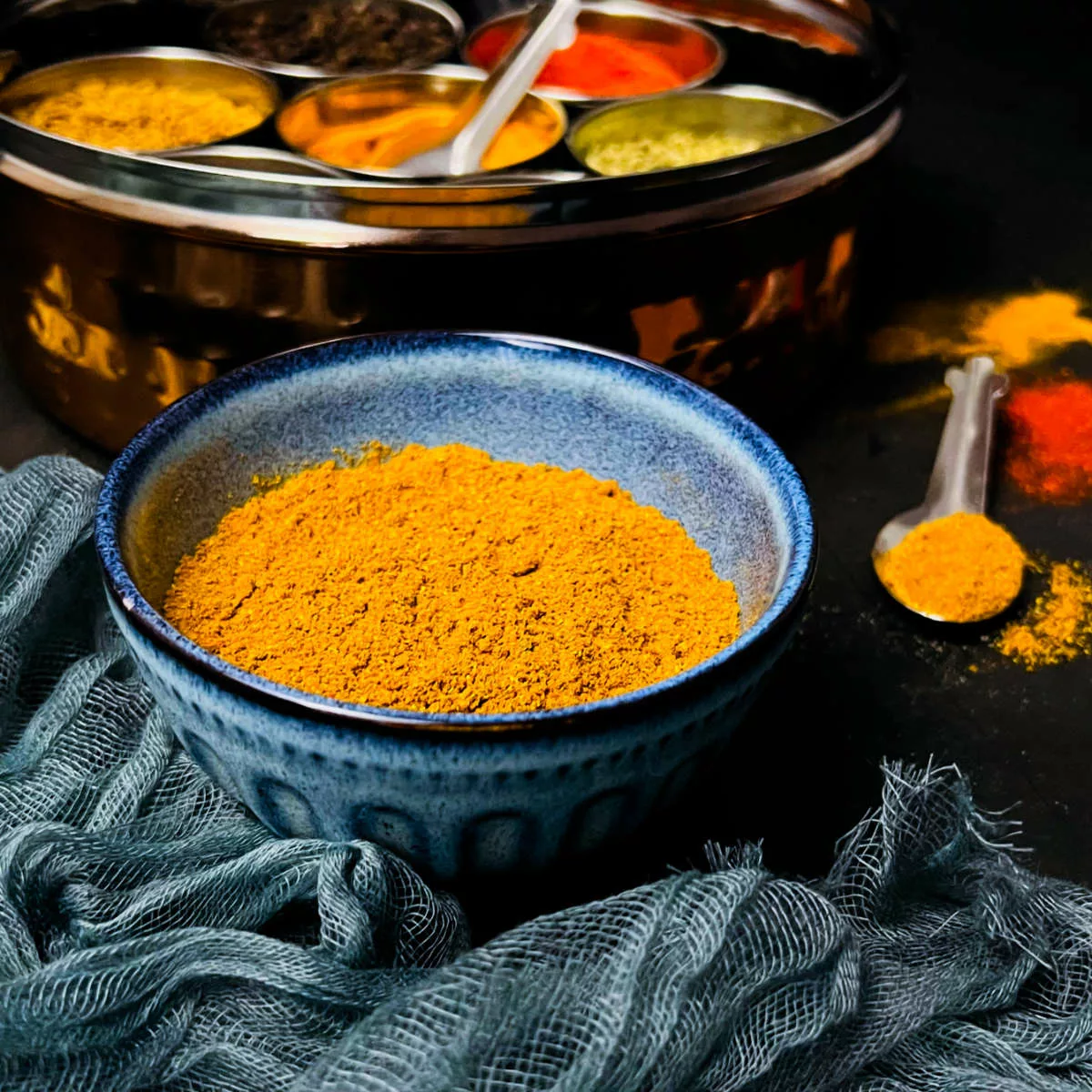
Curry powder is a versatile spice blend that adds depth and flavor to Indian dishes without the need to use several varieties of spices. This blend of spices is used to flavor Indian dishes, and contrary to popular belief, it is not commonly used by Indians.
While it is commonly found in any grocery store, making your own homemade spice blend is easy and customizable. Have a jar of homemade curry powder on hand and use it in your favorite Indian curries, dips, or salads. This will undoubtedly elevate your favorite Indian dish and make it much better than ever before.
Why you will love this recipe?
- This recipe has a balanced mix of spices that complement each other without any one spice overpowering the others.
- It is highly customizable and allows you to adjust the spices as per your personal preferences.
- I am using a mix of whole and ground spices in this recipe. The whole spices are toasted and ground, ensuring the resulting blend has maximum flavor.
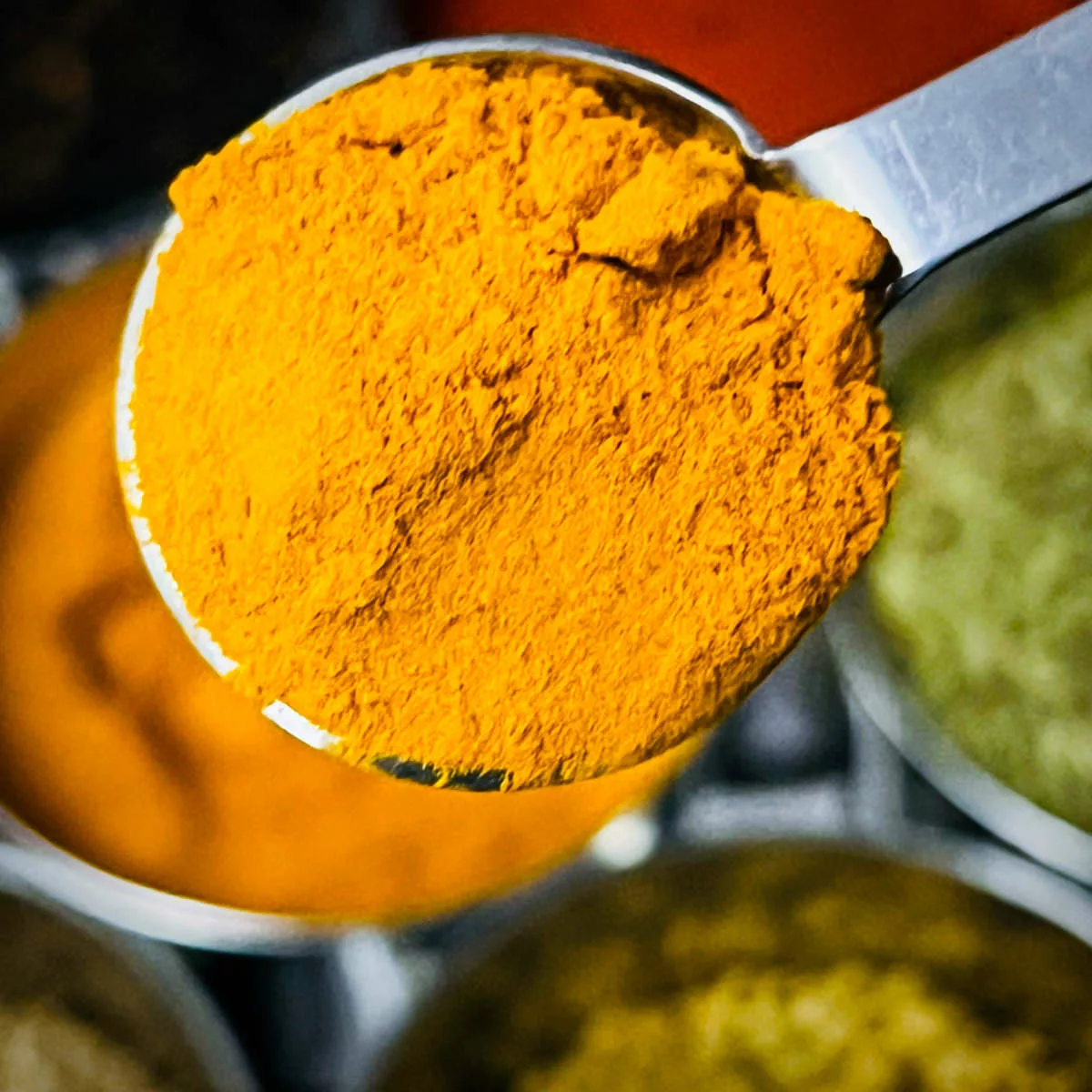
Ingredients
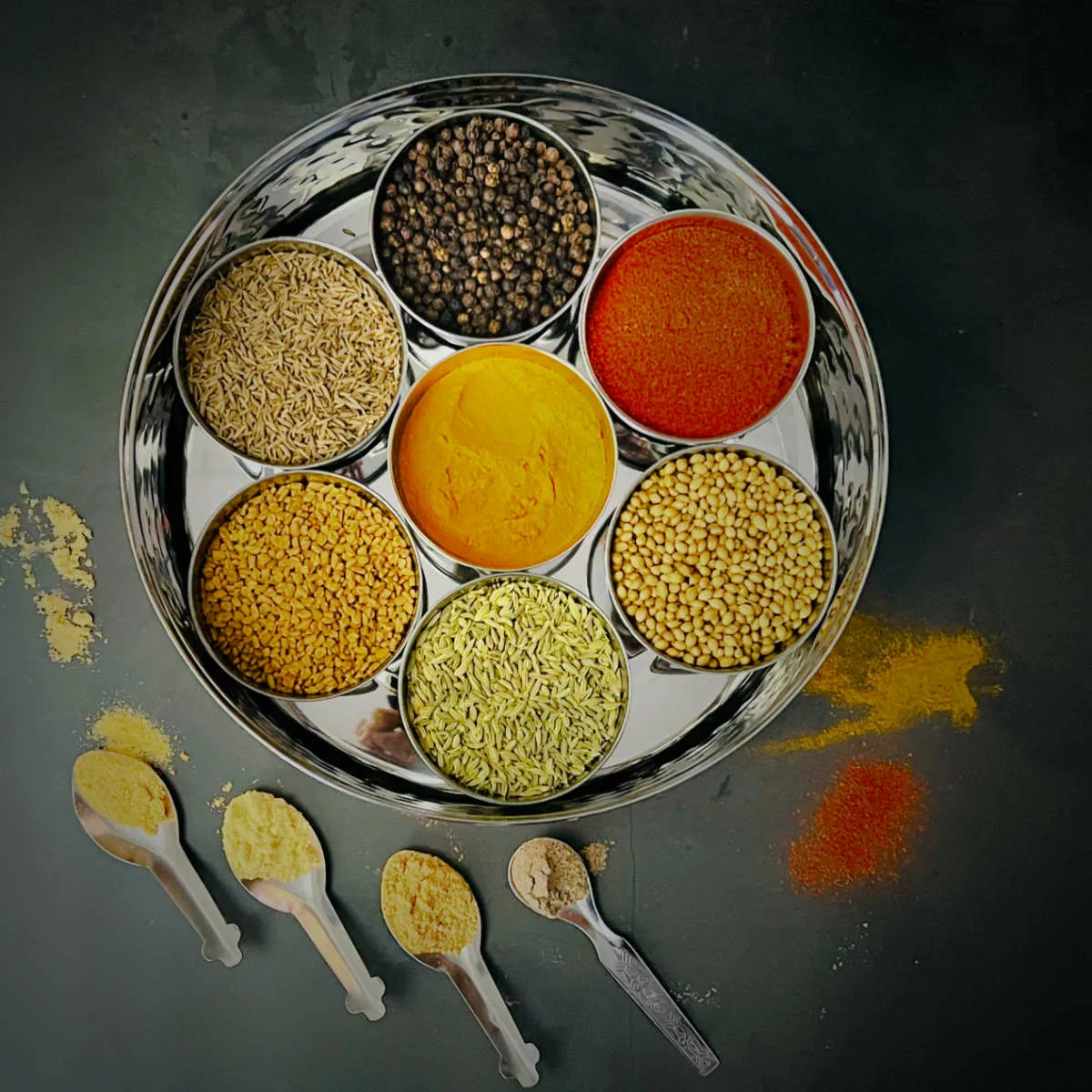
Whole spices: Coriander seeds, whole cumin seeds, fenugreek seeds, fennel seeds, and whole black pepper.
Ground spices: Ground turmeric, dry mustard powder, ground cardamom, ground ginger, garlic powder, and chili powder.
Step-by-step instructions
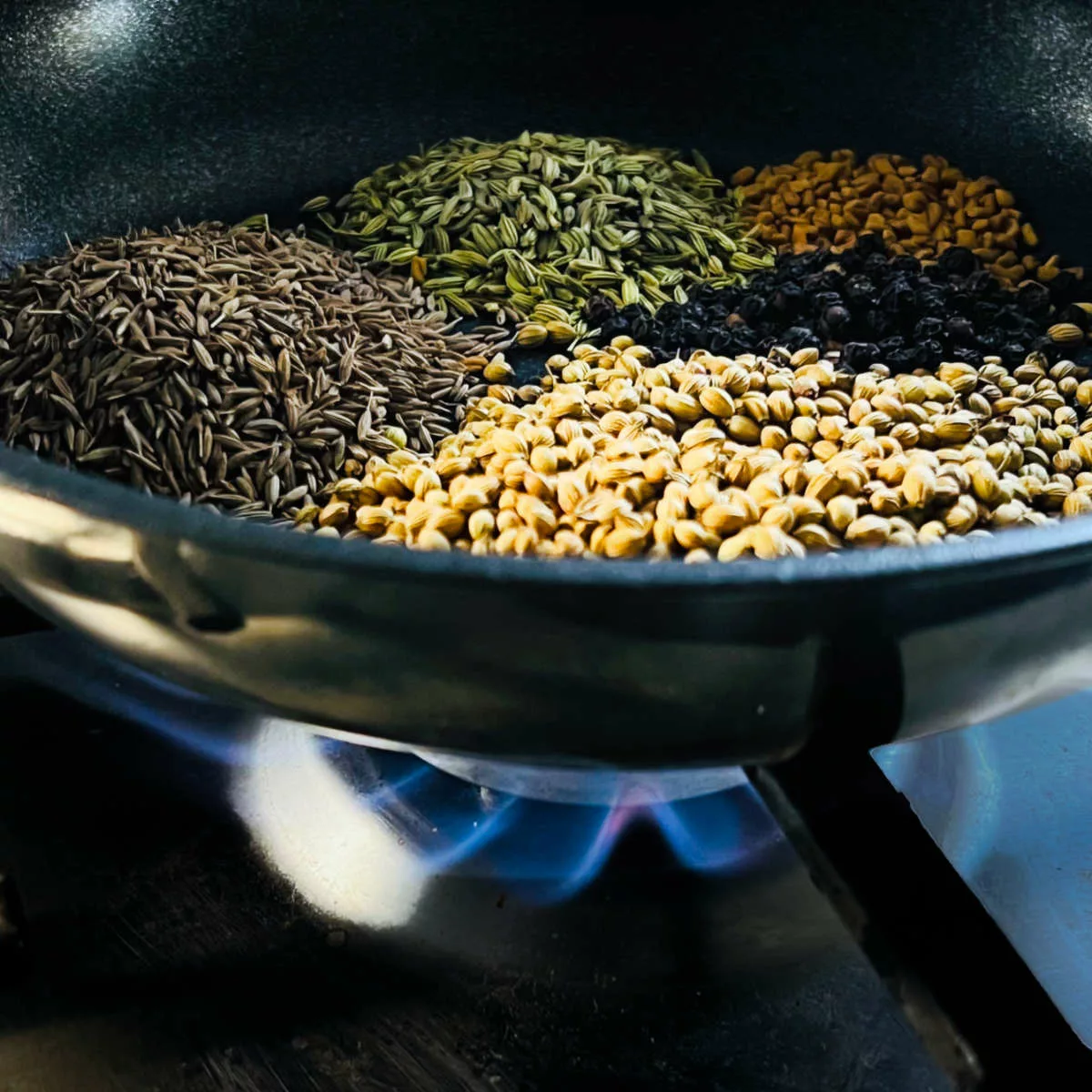
Step 1: Toast coriander seeds, cumin seeds, fennel seeds, fenugreek seeds, and black peppercorn in a dry pan for 3 minutes on medium heat.

Step 2: Let it cool down to room temperature. Transfer it to a spice grinder and grind it into a fine powder.
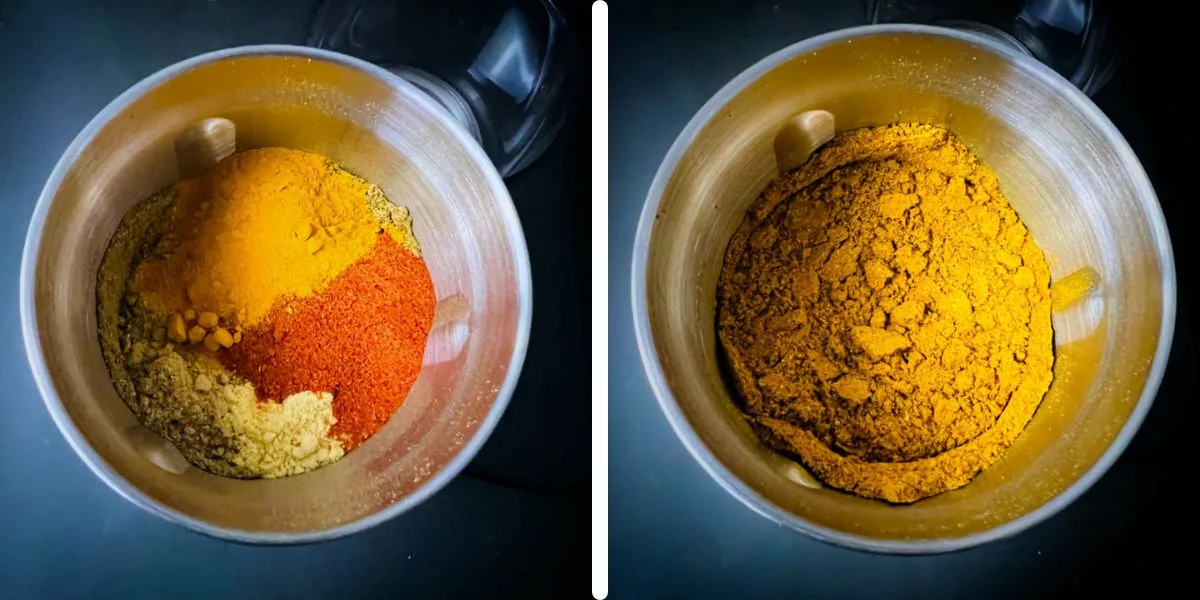
Step 3: Add the powdered spices - ground turmeric, mustard powder, ground cardamon, chili powder, ground ginger, and garlic powder. Grind again for a few seconds.
Expert Tips
Selecting between whole spices and ground spices significantly impacts the flavor and texture of your dish. Whole spices release oils when dry roasted, intensifying flavors. Ground spices offer convenience, ready to use directly. In this recipe, I use a combination of both. Whole spices add depth and complexity, releasing essential oils slowly for nuanced flavors. Ground spices ensure even distribution and easy integration into the blend.
Dry roast the whole spices before grinding. This will help to bring out their flavor and aroma.
Use a spice grinder or coffee grinder to grind the spices. While it is possible to use a blender or food processor to grind spices, a spice grinder will give you the most consistent texture.
Use curry powder in these recipes, or check out my entire collection of recipes using curry powder:
- Easy Curried Green Bean Casserole
- Air Fryer Beets / Curry Roasted Beets
- Air Fryer Bell Peppers with Curry Spices
- Pan-Fried Chayote Squash / Chow Chow Sabzi
- Curried Lentil Soup Recipe (Instant Pot)
- Curry Roasted Sweet Potato Cubes (Air Fryer)
- Best Curried Chicken Salad Recipe
- Best Curried Potato Salad Recipe
Recipe FAQs
Although they are nearly identical and have common ingredients, Madras curry powder is typically hotter due to the increased use of chili powder. If you switch them in any recipe, the heat level may change substantially.
While making a curry paste using curry powder is possible, it is not the traditional method and may not yield the same depth of flavor as making a paste from scratch. Curry paste typically consists of whole spices, and aromatics like onion, garlic, ginger, and fresh herbs, all ground together with a little bit of oil to form a paste. However, for quick access to curry paste, you can mix curry powder with oil, onion powder, garlic, and ginger to make a paste. The resulting flavor may not be as complex as a traditional curry paste, but it can still be an easy way to add Indian flavors to your dishes.
Curry powder and garam masala, though both common in Indian cuisine, differ in composition and usage. Curry powder combines various spices, including turmeric, for use during cooking. Garam masala consists of warming spices like nutmeg, cinnamon, and cardamom, added towards the end or as a finishing spice. Turmeric is present in both but in varying quantities and roles: it forms the base in curry powder for a consistent yellow color, while in garam masala, it's used in smaller amounts alongside other warming spices.
Store curry powder in an airtight container in a cool, dark place. Like all spices, this spice blend will lose its flavor over time, so it is best to make small amounts.
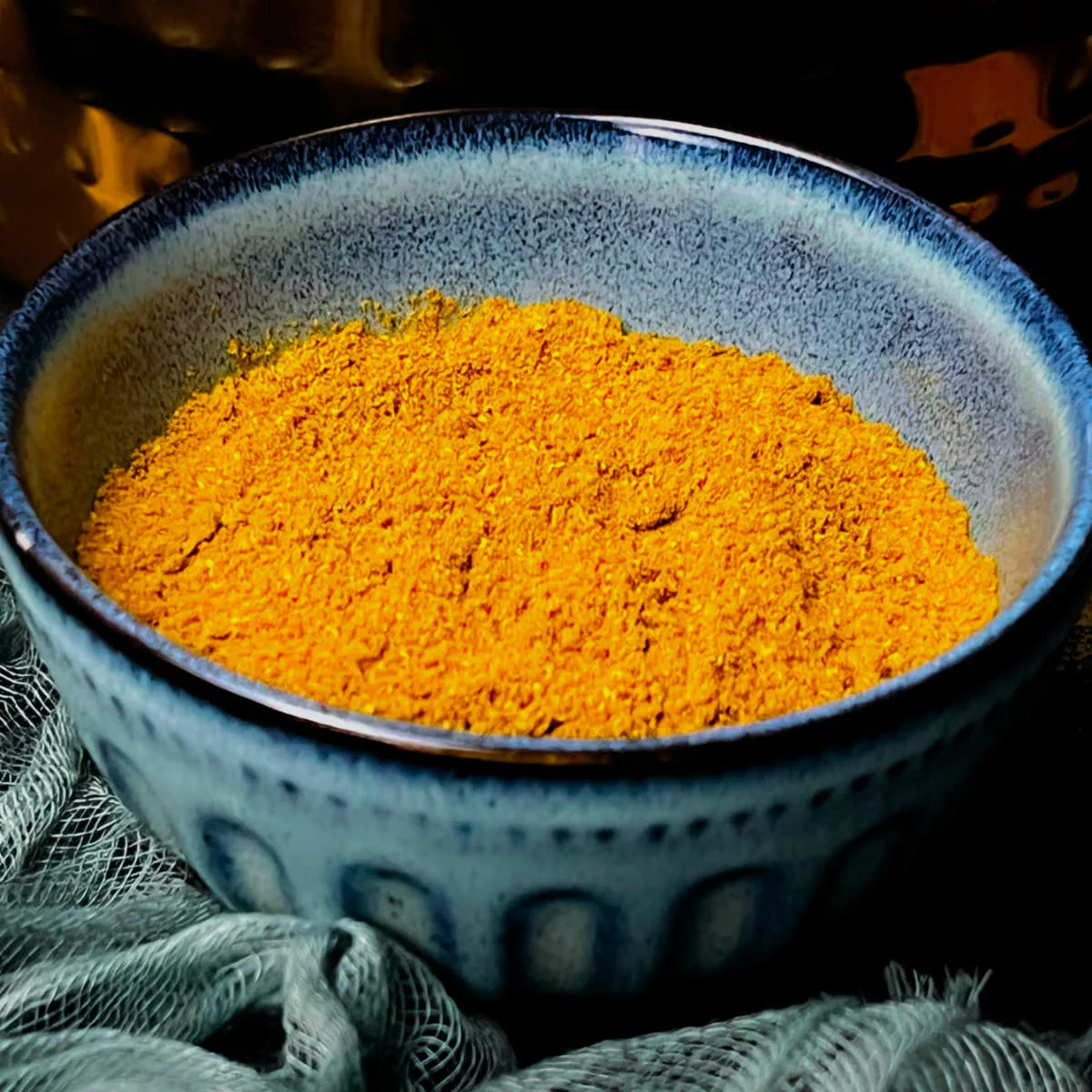
More spice blend recipes
If you tried this Curry Powder Recipe or any other recipe on my website, please leave a ? star rating and let me know how it went in the ? comments below.
Recipe card
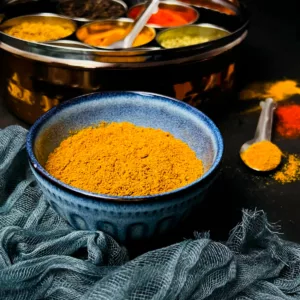
Homemade Curry Powder
Ingredients
Whole spices:
- ¼ cup coriander seeds (substitute with 2 tablespoons of ground coriander)
- 2 tablespoon cumin seeds (substitute with 1 tablespoon of ground cumin)
- 1 tablespoon fennel seeds (substitute with ½ tablespoon of fennel powder)
- 1 teaspoon fenugreek seeds optional
- 1 teaspoon black peppercorn
Ground spices:
- 2 teaspoon ground turmeric
- 1 teaspoon mustard powder
- 1 teaspoon ground cardamom
- 2 teaspoon chili powder or cayenne (use paprika to make it mild)
- ½ teaspoon ground ginger
- ½ teaspoon garlic powder
Instructions
- Dry roast coriander seeds, cumin seeds, fennel seeds, fenugreek seeds, and black peppercorn for 3 minutes. Let it cool down completely.
- Transfer it to a spice grinder and add the powdered spices - ground turmeric, mustard powder, ground cardamon, chili powder, ground ginger, and garlic powder. Grind into a fine powder.
- Transfer the mixture to an airtight container and store.


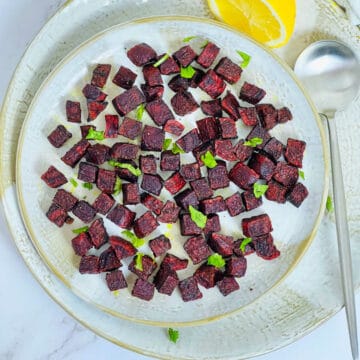
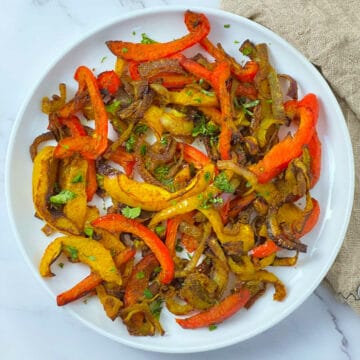
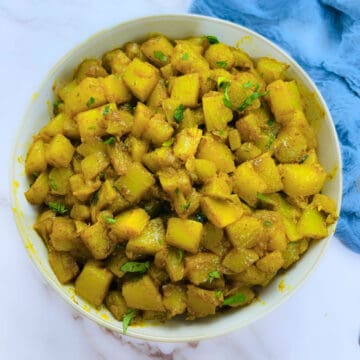
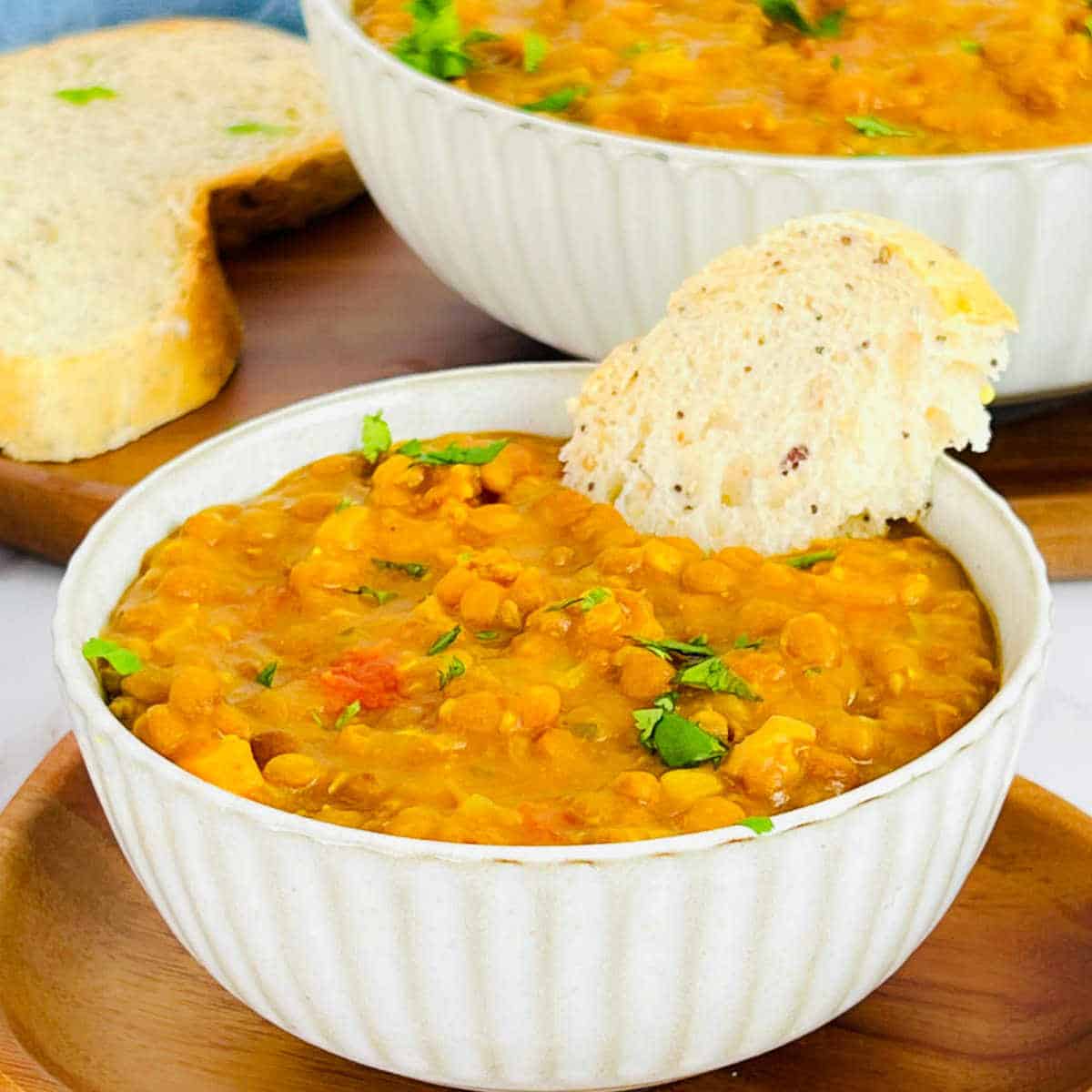
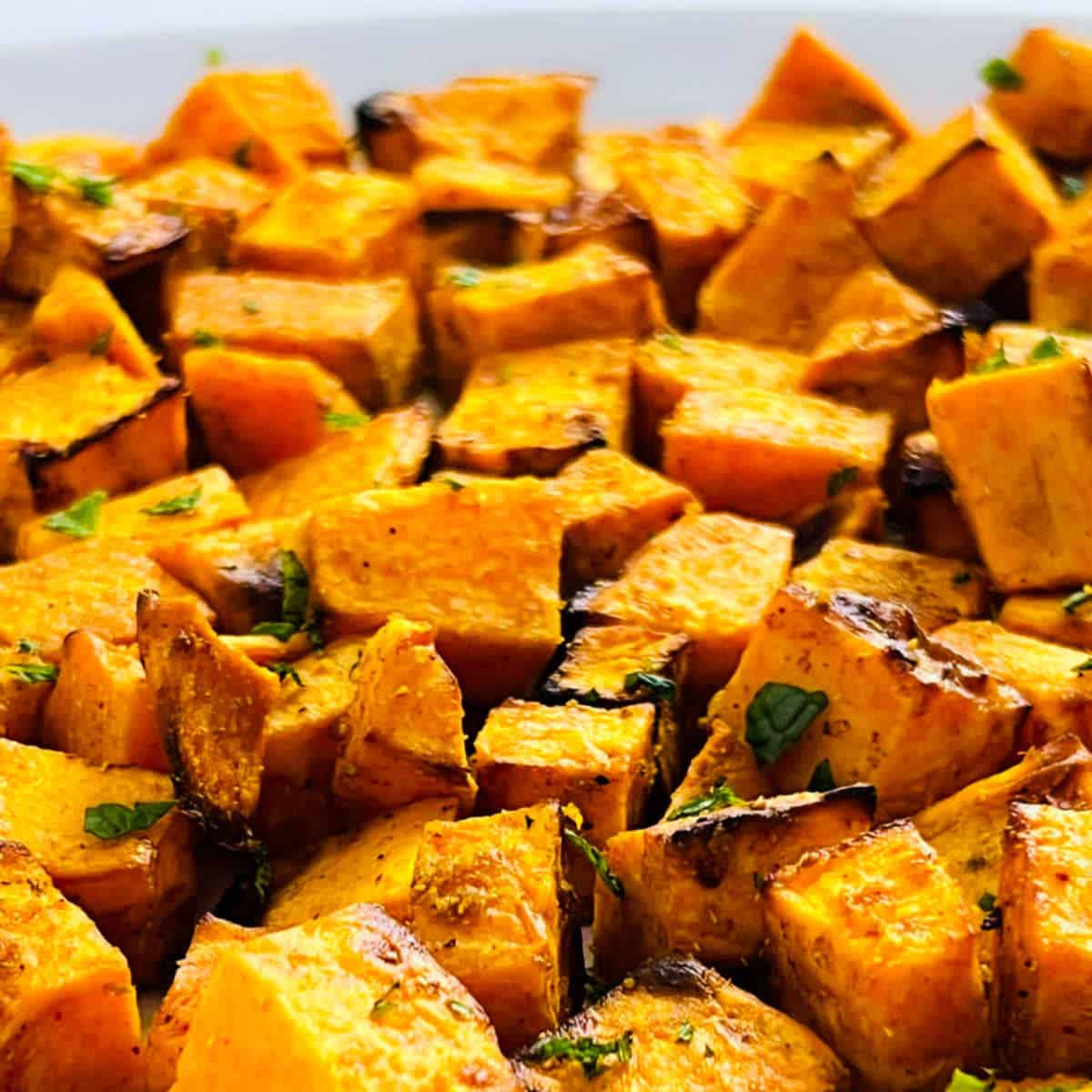
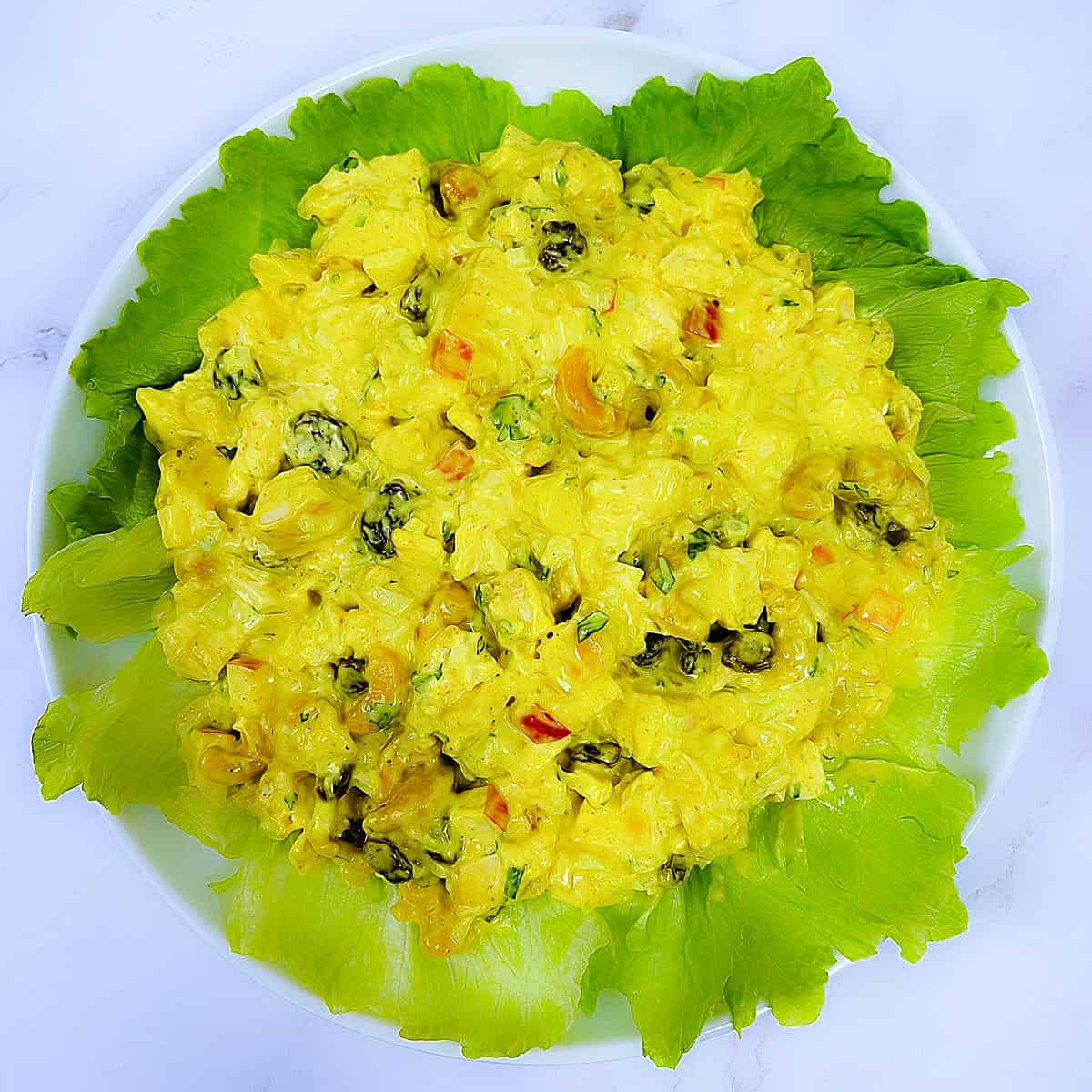

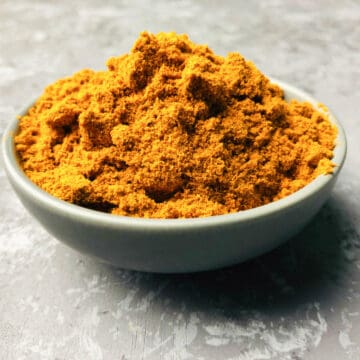
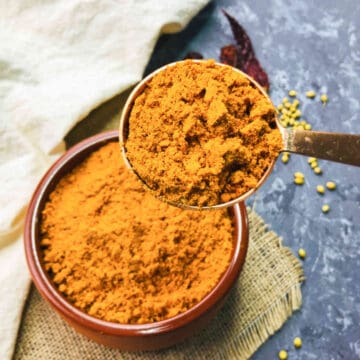

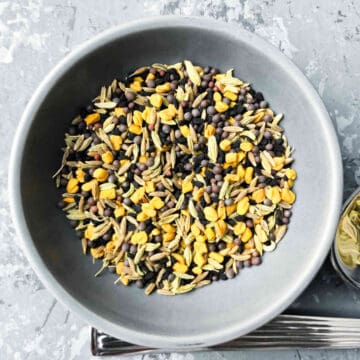
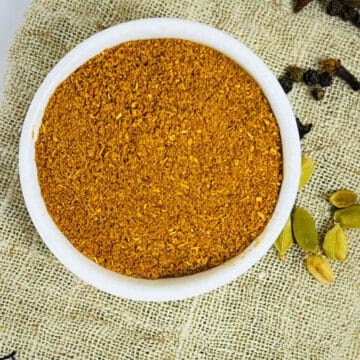

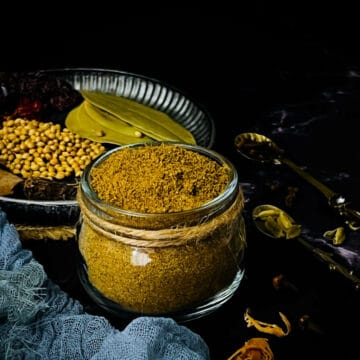
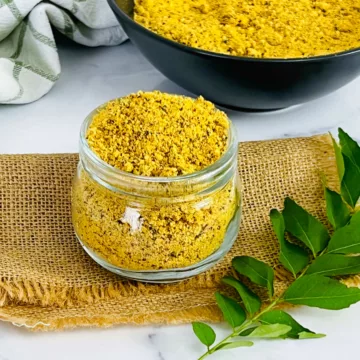
Millie says
Wonderful - Thank you so much for sharing!!!
We love the chicken curry I made using the curry powder with this recipe!!!
Shilpa Kerur says
I am so glad you enjoyed the curry made using my curry powder recipe, Millie. Thank you for your feedback 🙂
- Shilpa
Emily D says
Thank yooou!